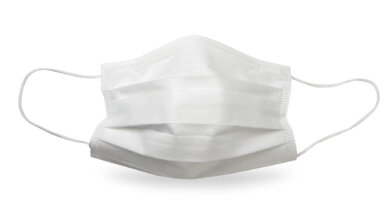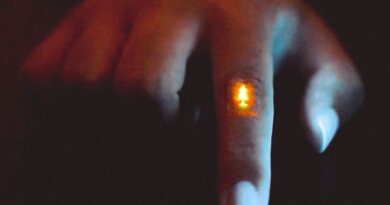Is Sweat the Future of Health Monitoring?
Sept. 13, 2022 – Even as you read this, your body is working to maintain balance – and not just in the “don’t fall over” sense. Hordes of chemical reactions are happening inside you, producing energy, processing waste, and keeping you healthy. Along the way, your body is releasing signals about your well-being.
Wearable technology can reveal some of those signals, like heart rate or sleep cycles. Many more important clues about your health are evident in the blood. The problem: Most people don’t like to be stuck by a needle. (Just ask anyone with diabetes who’s had to prick their finger a dozen times a day.)
But there may be an alternative. Sweat stems from the water within our blood, which means sweat “is like a window into the blood,” says Sarah Everts, a science journalist and author of The Joy of Sweat: The Strange Science of Perspiration.
Since sweat is easier to get to than blood, researchers are looking at whether it could be a pain-free way for us to gain better insight into our health.
What’s Really in Our Sweat?
Perspiration has intrigued scientists for centuries. As far back as the second century AD, Galen – a prominent Greek doctor in the Roman Empire – explored whether people could sweat body fat from their pores or detox their blood by sweating, Everts says.
While fat tissue won’t seep out of your pores, other substances will. Sweat is 99% water but contains small amounts of sodium, chloride, lactate, glucose, cortisol, ammonia, urea, ethanol, and small proteins.
Sweat may also hold trace amounts of chemicals and toxins, such as heavy metals and bisphenol A (BPA), but only if they were present in the blood. (Everts once reported a rare case when a nurse’s sweat turned red from eating enormous amounts of chips with red dye.)
For normal, healthy people, the liver and kidneys handle most of your body’s efforts to get rid of toxins – and do so just fine without the need for a sauna.
How Is Sweat Monitoring Used Today?
There are a few ways medicine – and law enforcement – already use sweat monitoring.
Cystic fibrosis
A high level of chloride in the sweat is a symptom of cystic fibrosis, an inherited disorder that makes kids sick by disrupting the normal function of cells in the lungs. In the late 1950s, sweat chloride testing became part of diagnosing infants with CF and is considered the gold standard today.
But this involves sticking probes on an infant’s skin and triggering the patient to sweat by sending a mild electrical pulse. Sweat is collected into a coiled-up plastic tube and assessed for chloride.
Sweat chloride testing “is done routinely, but it is clumsy,” says John Rogers, PhD, a professor at the McCormick School of Engineering at Northwestern University. That is why he and his team developed sweat stickers. The color-changing stickers have tiny channels, valves, and reservoirs that, when stuck to the skin’s surface, can capture and store sweat as it emerges, making it easier to collect and analyze. In a recent study, Rogers and his team showed how well this device worked for diagnosing CF in children.
“The vision is a sweat test that can be mailed to people and done in a home setting, to make this screening test available to people who may not have access to those kinds of facilities,” Rogers says. “You wouldn’t need the trained personnel or the expensive lab desktop instruments.”
Alcohol monitoring
There is a strong link between the level of alcohol in your blood and the amount found in your sweat.
Beginning in 2003, what’s known as SCRAM CAMs (which stands for SCRAM Continuous Alcohol Monitoring) were created to help police and courts with continuous alcohol monitoring of high-risk DUI offenders and domestic violence cases.
It’s like having a breathalyzer attached to your ankle, always looking for alcohol in your sweat.
What Else Could Sweat Monitoring Do?
In a world with more advanced sweat monitoring wearables, a person theoretically could:
- Measure stress through cortisol production. A study showed that it is possible to detect cortisol through a wearable patch. But the work is very much in its early stages and hasn’t been used for any meaningful clinical assessment.
- Let drinkers know it’s time to get a ride home. Research showed that flexible patches (ones that likely are far more comfortable than a SCRAM CAM) can detect ethanol in the bloodstream. So, imagine wearing a small patch that sends push notifications to your phone if you’ve had a few too many at happy hour.
- Tell a coach that an athlete needs a break. Imagine an absorbent patch on the skin that collects information on lactate levels, then instantly sends results to the coach’s computer screen on the sideline, letting them know it is time for a player substitution.
- Save people who have diabetes from so much finger pricking. Other early studies show that noninvasive, bandage-like wearable technologies could potentially measure glucose through sweat. Recently, Ohio State University researchers created a “smart necklace” that can monitor glucose levels of the person wearing it. The results suggest the sensor “will work to monitor other important chemicals in sweat,” according to a news release.
But science and the technology to do these things aren’t there yet. There is also conflicting evidence to prove if sweat is a reliable way of tracking all the things we might be curious about.
Another issue: While sweat may offer a glimpse of what could be happening inside the body, it doesn’t always reflect reality perfectly. For example, talking about athletes and exercise, lactate levels in the blood show how hard the muscles are working. But the act of sweating itself also produces lactate.
That means someone who is working out hard may sweat more and produce higher lactate levels in their sweat. But that extra lactate may not accurately show muscle fatigue or exertion.
While it would be cool to get feedback on the chemical makeup of your sweat during a workout, the data may not be all that helpful if you have a high sweat rate.
What’s Holding Back Sweat Monitoring?
There are two main barriers to learning from sweat chemistry – and until recently, they’ve been stuck in a bit of a “chicken or egg” impasse.
First, there’s the act of capturing the data. Advances in biomonitoring patches, such as Rogers’ sweat stickers and other wearable devices, are making sweat data capture more feasible.
But challenge number two is understanding whether the data captured is meaningful.
“There are many different biomarkers in sweat, and it hasn’t been studied very carefully in the past because there hasn’t been a clean and reproducible way to collect sweat,” Rogers explains.
This is where Rogers believes microfluidic devices, like the sweat sticker, will become even more valuable – by helping researchers get more and better data on sweat.
What Might Be Even More Useful Than Sweat Monitoring?
Although sweat holds information that could be useful, “the body has evolved to keep inside information in and outside information out, so accessing [biomarkers] by slapping something on the skin is not easy – that is why we do blood draws, they take part of the body out,” says Jason Heikenfeld, PhD, a professor at the University of Cincinnati.
Heikenfeld is a researcher and developer of wearable and flexible electronics. He also understands why many see potential in sweat monitoring, but he’s not so sure it’s practical.
“We spent a lot of time on sweat because it was the holy grail, [offering] noninvasive continuous access to things in the body,” he says. But “the set of things you can measure are limited. And we found sweat was way harder [to monitor accurately]. Whole blood is well buffered; its pH doesn’t change. Sweat salinity and pH changes all over the place depending on sweat rate, and that confounds diagnostics in sensors like crazy.”
That’s why Heikenfeld believes for most measures, the future of chemistry-monitoring wearables isn’t in sweat monitoring but rather in interstitial fluid (ISF) sensing.
Interstitial fluid exists under the skin, between every cell. It contains things that leak out of the blood, which means it’s even more like blood than sweat is.
ISF sensing needs only microneedle-like patches or wire-based sensors. This technology is already available for some biomarkers, such as continuous glucose monitoring worn on the back of the arm with a sensor that penetrates the skin.
“The big future, and where we’re 100% active these days, is interstitial fluid sensing,” Heikenfeld says. “Most of the things you’d want to measure in blood, you’re able to do in interstitial fluid.”
He says his team is nearly ready to release a review that supports this claim.
Still, that doesn’t mean sweat won’t have a place, Heikenfeld says. He sees opportunities to use sweat for tracking hormone levels (such as those that regulate stress, sex, and sleep) and for monitoring levels of a medication in the body and tracking how quickly it’s broken down.
But for now, both interstitial fluid and sweat monitoring require much more research before any mass-market uses become available.





cialis farmacia senza ricetta: le migliori pillole per l’erezione viagra ordine telefonico
dark market onion blackweb official website deep web drug links